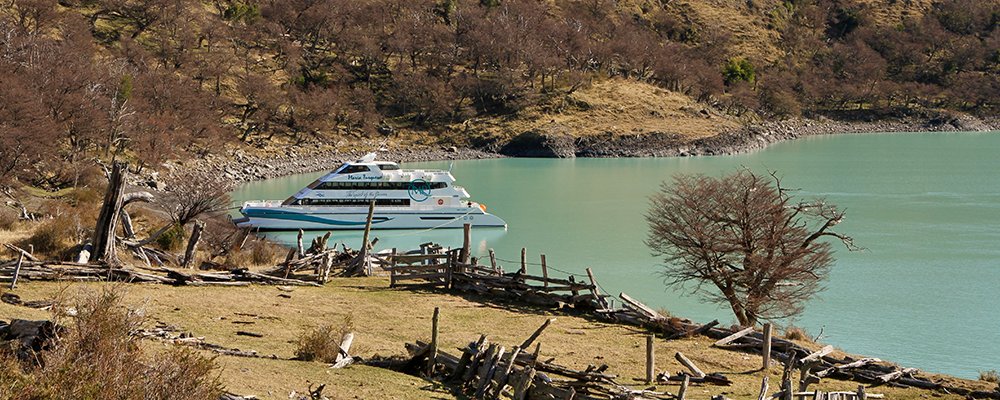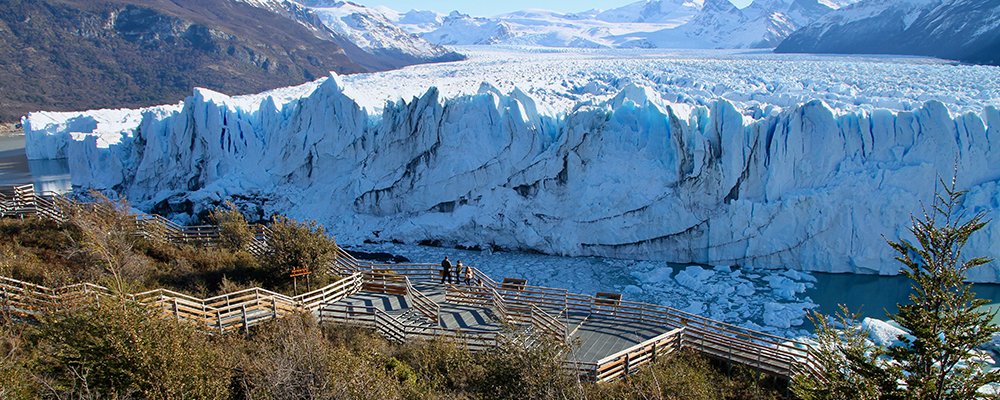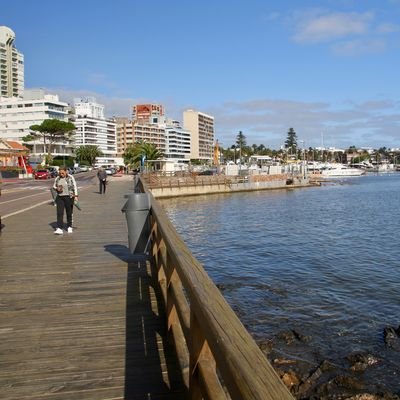In the middle of nowhere, the tourist hot spot of El Calafate sits on the edge of the Southern Patagonian Ice Field. It is the gateway to Los Glaciares National Park in the Santa Cruz province of Argentina. This region is for intrepid adventurers into hiking, landscape photographers, and those who wish for the biggest chunk of ice to put into their drink while sitting on the stern of a sightseeing boat.

Flying into El Calafate, founded in 1927, is an experience you will remember. The Comandante Armando Tola International Airport opened in 2000, approximately 21km from the city's east. A fascinating tidbit of information: the original airstrip is now the main road in and out of town. It's worth fighting for a window seat on the plane as the views are spectacular: a vast landscape gouged eons ago by massive slow-moving glaciers, the looming Andes Mountains' layered earthen tones, and the ribbons of turquoise rivers culminating in expansive lakes. It's an awe-inspiring sight that will send chills up your spine. The town appears like a pimple on a brown face amid an arid and parched flat space of land.

This quirky remote town is named after a Patagonian bush of little yellow flowers bedecked with dark blueberries that flourish in the area. El Calafate, affectionately referred to as merely "Calafate" by the locals, sits on the southern border of Lake Argentino, where pink flamingoes prance on Laguna Nimez. Lake Argentino is so cold that you can only last about 20 seconds in its mineral-infused milky blue glacial waters. The Andes Mountain chain blocks any rain coming from the Chilean side, so the only greenery is bent and willowy trees planted by the residents to protect their houses from the harsh, dry western winds.
The countryside around El Calafate is wild, windswept and desolate. Guanacos play on rocky outcrops, where pumas hunt at night. Eagles soar in skies that appear to go on forever, and cute Terricole birds stalk the ground beside life-long mates probing the dirt for insects with needle-like sharp beaks. The endless steppes of swaying grasses lead to high plateaus where hares run, and long sandy stretches fringe unreal blue lakes in the distance. Ancient caves hide archaeological sites, and panoramic views take in the highest peaks of the Andes Mountain range; Torres del Paine, the Centinela River Valley and Fitz Roy Mountain.

Stray dogs rule the town's streets, lazing in doorways or sitting expectantly in cafes waiting for table scraps. Originally a tapestry of large sheep properties, it's now a mixture of estancias running sheep and cattle. Gauchos (aka cowboys) wearing traditional "campero" hats jauntily on an angle, now ride motorbikes instead of horses to round up their animals. Guanacos (a cousin to the lama) feature on cafe menus as hamburgers and chocolate shops pepper the main street where Calafate branded tea, jams, and soaps can be bought. Beef may be king in the north of Argentina, but down south, it's all about lamb on your dinner plate and indulging in one of the many craft beers on offer.
The drawcard for the isolated town of El Calafate, apart from the wild beauty and the easy access to the village of El Chaltén located within Los Glaciares National Park—the hiking mecca of trails around the northwest peaks of Cerro Torre and Mount Fitz Roy—is to sit on a cruise boat slowly plying the scenic waters dotted with icebergs resembling ice sculptures created by giants. The sun loops through the ice tunnels, giving these giant ice blocks phosphorescent highlights. The blue shimmers on the calm water surface, broken by the silent journey of massive icebergs slowly gliding. The tour boats get so close to the floating icebergs that it's possible to reach out and grab a chunk of ice for your drink.

The Southern Patagonian Ice Cap Field is the most extensive ice field on the planet, apart from the Antarctic Continent. The glaciers poke their noses into the air 1500 meters but descend below sea level up to 200 meters. The UNESCO World Heritage Site of Los Glaciares National Park includes the Cerro Chalten, Cerro Torre, and the queen of them all in its unique shades of blue, the Perito Moreno Glacier. If you want a different view of the Moreno Glacier, it's possible to do a catwalk circuit on dry land that will give you incredible north-face views. You can hear the cracking sound like thunder as the glacier walls rupture and cascade into the water. Other mammoth glaciers like Spegazzini Glacier and Upsala Glacier cover entire valleys. A modern interpretive center called the Glaciarium allows tourists to learn about the region's numerous glaciers.
No stay in El Calafate is complete until you have sipped a cocktail in one of the ice bars on the main street.
Gail Palethorpe, a self proclaimed Australian gypsy, is a freelance writer, photographer and eternal traveller. Check out her website Gail Palethorpe Photography and her Shutterstock profile.















